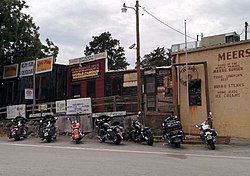
Faxon is a town in Comanche County, Oklahoma, United States. It is located on Oklahoma State Highway 36 about 18.3 driving miles southwest of Lawton. The population was 136 at the 2010 census. It is included in the Lawton, Oklahoma Metropolitan Statistical Area.

Blackburn is a town in Pawnee County, Oklahoma, United States. The population was 108 at the 2010 census, up 5.9 percent from the figure of 102 recorded in 2000. It is 12 miles (19 km) east of the city of Pawnee.

The Wichita people, or Kitikiti'sh, are a confederation of Southern Plains Native American tribes. Historically they spoke the Wichita language and Kichai language, both Caddoan languages. They are indigenous to Oklahoma, Texas, and Kansas.

The Wichita Mountains are located in the southwestern portion of the U.S. state of Oklahoma. It is the principal relief system in the Southern Oklahoma Aulacogen, being the result of a failed continental rift. The mountains are a northwest-southeast trending series of rocky promontories, many capped by 500 million-year old granite. These were exposed and rounded by weathering during the Pennsylvanian and Permian Periods. The eastern end of the mountains offers 1,000 feet (305 m) of topographic relief in a region otherwise dominated by gently rolling grasslands.
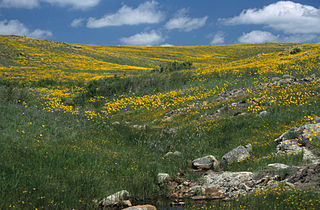
Wichita Mountains Wildlife Refuge, located in southwestern Oklahoma near Lawton, has protected unique wildlife habitats since 1901 and is the oldest managed wildlife facility in the United States Fish and Wildlife Service system. The refuge's location in the geologically unique Wichita Mountains and its areas of undisturbed mixed grass prairie make it an important conservation area. The Wichita Mountains are approximately 500 million years old. Measuring about 59,020 acres (238.8 km2), the refuge hosts a great diversity of species: 806 plant species, 240 species of birds, 36 fish, and 64 reptiles and amphibians are present.

The Tawakoni are a Southern Plains Native American tribe, closely related to the Wichitas. They historically spoke a Wichita language of the Caddoan language family. Currently, they are enrolled in the Wichita and Affiliated Tribes, a federally recognized tribe.
Jean-Baptiste Bénard de la Harpe was a French explorer who is credited with using the name "Little Rock" in 1722 for a stone outcropping on the bank of the Arkansas River used by early travelers as a landmark. Little Rock, Arkansas was subsequently named for the landmark.

According to the Encyclopedia of Oklahoma History and Culture, there were two trails that may have been known as the California Road at the time of the California Gold Rush. A southerly route, which ran through present-day Oklahoma, along the Canadian River. A northern route was usually called the California Trail.

Fort Arbuckle was constructed by the US Army in 1850 to counter raids by Plains Indian tribes on immigrant trains heading west to California and on the settlements of Choctaw and Chickasaw nations in Indian Territory.

Chilocco Indian School was an agricultural school for Native Americans on reserved land in north-central Oklahoma from 1884 to 1980. It was approximately 20 miles north of Ponca City, Oklahoma and seven miles north of Newkirk, Oklahoma, near the Kansas border. The name "Chilocco" is apparently derived from the Creek tci lako, which literally meant "big deer" but typically referred to a horse.
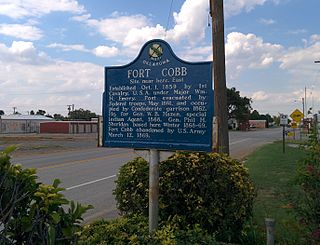
Fort Cobb was a United States Army post established in what is now Caddo County, Oklahoma in 1859 to protect relocated Native Americans from raids by the Comanche, Kiowa, and Cheyenne. The fort was abandoned by Maj. William H. Emory at the beginning of the Civil War, but then occupied by Confederate forces from 1861–1862. The post was eventually reoccupied by US forces starting in 1868. After establishing Fort Sill the US Army abandoned Fort Cobb. Today there is little left of the former military post.
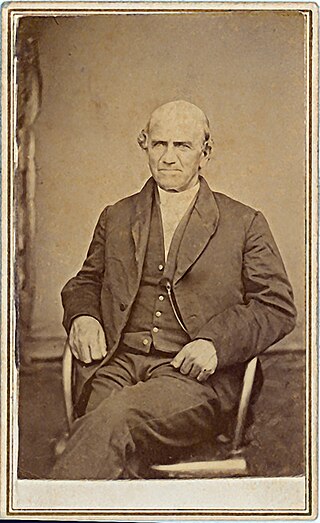
Lawrie Tatum was a Quaker who was best known as an Indian Agent to the Kiowa and Comanche tribes at Fort Sill agency in Indian Territory.

Charge of the Model T's is a 1977 American comedy spy film directed by Jim McCullough Sr. with the screenplay by Jim McCullough Jr. based upon the novel of the same name by Lee Somerville. Starring John David Carson, Carol Bagdasarian, Louis Nye, Herb Edelman, and Arte Johnson.
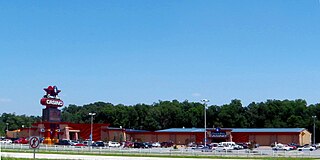
Comanche Nation Casino, often known as Comanche Nation Entertainment, is a Native American casino geographically situated in the Southwest Great Plains Country of the United States. The American Indian casino is located in Lawton, Comanche County, Oklahoma with East Cache Creek serving as a picturesque. The gaming establishment, which opened in 2007, is operated and owned by the tribal sovereignty of the Comanche Nation of Oklahoma with the governing powers in Lawton.

Oklahoma Beer Act of 1933 is a United States public law legalizing the manufacture, possession, and sale of low-point beer in the State of Oklahoma. The Act of Congress cites the federal statute is binding with the cast of legal votes by the State of Oklahoma constituents or legislative action by the Oklahoma Legislature.
James Mahlon Haworth was a United States Army major, an Indian agent, and the first Superintendent of Indian Schools in the United States.
Meers Fault is a fault in Oklahoma that extends from Kiowa County to Comanche County. It is marked by a 22–26 kilometers (14–16 mi) long conspicuous fault scarp but the fault extends beyond the ends of this scarp. The Meers fault is part of a group of faults that lie between the Anadarko Basin and the Wichita Mountains.

Ketch Ranch House or Ketch Ranch was private property located in the Wichita Mountains of Southwestern Oklahoma. During the early 1920s, the forest reserve residence was established as a working ranch and vacation home for Ada May Ketch and Frank Levant Ketch who served as mayor of Ringling, Oklahoma.

Apache Casino Hotel or Fort Sill Apache Casino is operated and owned by the Fort Sill Apache Tribe of Oklahoma. The casino and hotel is located within Comanche County bearing east of Interstate 44 in Lawton, Oklahoma. In January 1999, the Native American gaming establishment was introduced to Southwestern Oklahoma within the Kiowa-Comanche-Apache Reservation lands. The Apache gaming enterprise originated as a membrane structure or tension fabric building housing Class II or Class III casino gaming and slot machines.

Blockhouse on Signal Mountain is within the Fort Sill Military Reservation, north of Lawton, Oklahoma. The rock architecture is located along Mackenzie Hill Road within the Fort Sill West Range being the Oklahoma administrative division of Comanche County.
